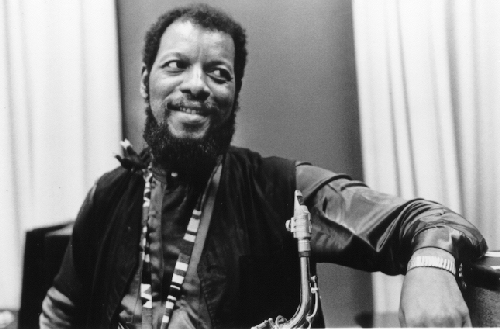![]()
![]()
![]()
![]()
![]()
“Freed” the music of chord changes
Ornette's biggest contribution to jazz was freeing the music of rigid harmony. He believe in improvising not on preset chord changes, but on the feeling that the tunes melody sets up.
“Sometimes Scotty [LaFaro] would go to rehearsals that I did with Ornette and listen; although, he told me on the side, 'I don't know if I can play this music or not because I love playing chord changes.' And I said, 'That's what we're doin'!' And he said, 'No you're not!' And I said, “Yes we are!'” - Charlie Haden
Expanded the tonal palette of the saxophone
Not only was Ornette's music unique in its lack of definite harmonic structure, but he also employed various tonal effects in his playing. Screeching altissimo notes, gravelly growls, and vocal-like squawks were common in his music. Later free players like Albert Ayler and Peter Brötzmann expanded the saxophones timbrel palette even further. This textural style would come to be known as “energy playing."
Harmolodic style
Ornette organized his revolutionary ideas on improvisation and composition into a system he calls harmolodics—a combination of the words harmony, motion, and melody. He has spoken of publishing the theory in his own book, but so far the only knowledge we have of it is from interviews and an article that Ornette wrote for Downbeat Magazine. Unfortunately, Ornette's explanations are quite cryptic and difficult to understand. Often he refers to philosophical topics outside of music when trying to explain the theory. As applied to Ornette's classical compositions the theory involves harmonizing melodies in a way that creates new melodies from the harmony.
“The nature and application in Coleman's music of harmolodic improvisation are unclear but, insofar as Coleman's explanation can be understood, it apparently involves the simultaneous sounding, in different tonalities and at different pitches (determined by, for example, a notational change in clef) but in otherwise unchanged form, of a single melodic or thematic line...” - Grove Music Online
“Harmolodics is the use of the physical and mental of one's own logic made into an expression of sound to bring about the musical sensation of unison executed by a single person or with a group.” - Ornette Coleman
